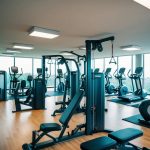
Tracking Cardio Progress
Monitoring cardio progress is crucial for measuring improvements and staying motivated. Many utilize fitness trackers to record heart rate, distance, and calories burned, facilitating a detailed overview of each workout session. Setting clear and achievable goals, like increasing distance or workout duration, helps maintain focus and provides a sense of achievement when milestones are reached.
Regular fitness assessments or noting changes in resting heart rate and recovery time also offer insights into cardiovascular improvement. Consistently tracking these factors allows individuals to adjust their programs effectively, ensuring continued progress toward enhanced cardiovascular fitness.
Flexibility and Mobility Training
Flexibility and mobility training are essential for preventing injuries and enhancing overall physical performance. Incorporating these practices into a fitness routine helps increase the range of motion and assist in recovery.
Incorporating Yoga and Pilates
Yoga and Pilates are excellent for improving both flexibility and mobility. Yoga focuses on harmonizing body movements by using specific poses that stretch muscles, ligaments, and tendons. These poses promote flexibility by gradually lengthening tissues, which helps prevent strains.
Pilates emphasizes core strength and control, which are crucial for sustaining good posture while stretching. Dynamic Pilates sequences often involve stretching movements combined with controlled breathing, enhancing both flexibility and balance. Classes or guided sessions can provide structured approaches, ensuring correct posture and form.
Independent practice via online videos or apps offers an accessible way to integrate these disciplines into daily life. Consistency is key, as gradual improvement in flexibility can have lasting effects, supporting other physical activities and fostering a sense of well-being.
Targeted Flexibility Exercises
Targeted flexibility exercises focus on specific muscle groups to enhance range of motion and elasticity. These exercises often involve static stretching, where a position is held for a certain period to lengthen and expand muscle fibers. Dynamic stretching incorporates motion, mimicking sports-specific movements, which prepares muscles for high-intensity activity.
Incorporating exercises such as hamstring stretches, calf stretches, and shoulder rotations enhances flexibility in those targeted areas. Stretching after workouts is particularly effective, as muscles are warm and more pliable, reducing the risk of injury.
Engaging in a regular routine of targeted flexibility exercises contributes significantly to overall mobility and can lead to improved physical performance. As with any aspect of fitness, gradual progression and attention to technique are essential for achieving the best results.
Tracking and Adjusting Your Program
To achieve fitness goals effectively, regular monitoring and tweaking of your regimen are critical. This involves actively tracking progress and making necessary adjustments to ensure continued improvement.
Using a Fitness Journal or App
Recording workouts and outcomes in a fitness journal or app is essential. These tools facilitate tracking of exercises, repetitions, sets, and even nutritional intake.
By consistently updating entries, individuals can gain insights into their strengths and areas needing improvement. For those preferring digital methods, fitness apps also offer additional features like workout reminders and personalized feedback.
Analyzing this collected data helps individuals identify patterns in their progress. Recognizing plateaus or periods of great improvements enables tailored modifications to workouts. Whether manually or via technology, consistently tracking plays a pivotal role in reaching fitness goals.
Evaluating and Adjusting Your Plan
Every fitness plan needs periodic evaluation to ensure its effectiveness. Regularly reviewing progress allows individuals to see if they’re moving toward their goals.
If progress stalls, it may be time to introduce changes. This could involve altering workout intensity, increasing weights, or adjusting the duration of sessions.
Flexibility in a fitness program ensures adaptation to the body’s changing needs. Consultations with fitness professionals may also provide additional guidance. They can offer insights into improving the regimen through minor or significant adjustments based on individual feedback.



